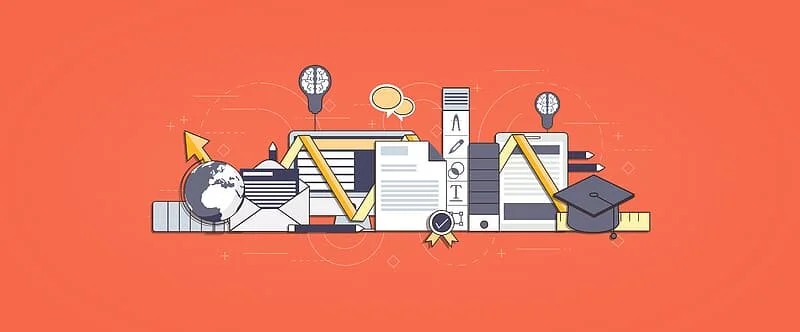In this guest blog Ruth Evans, HR Director and occupational psychologist, shares her insights of ‘Flow’ and how we can use this concept to boost fulfilment, satisfaction and wellbeing in our work.
I’ve been fascinated by the concept of “Flow” since I discovered it in my undergraduate dissertation on creativity & neuroscience. Since then, having delved more into positive psychology and workplace psychology for myself, I’ve come to love the broad applications of Flow theory and the huge number of ways it can touch day-to-day life.
What is Flow?
So what is Flow, and how can it improve our work? The concept was created by Mihaly Csikszentmihalyi, one of the eminent founding fathers of positive psychology, who defined Flow as a state of being so involved in a task that time passes unnoticed and attention is fully absorbed; it is related to increases in subjective well-being, deep enjoyment, and reduced anxiety about anything outside of current consciousness. Csikszentmihalyi has found, over decades of research, that the optimal conditions for finding a ‘Flow state’ occur when you are leveraging skills and operating with challenge. In other words, you need to be doing something that builds upon something you already know, but then find the “level up” in whatever it is, to keep it interesting. Too little challenge or skill makes us feel apathetic - too much, and we can become anxious and overly stressed. It’s a goldilocks formula for happiness.
Introducing Flow at work
A few years ago, I created a short training on Flow for my HR colleagues, to test out a small hypothesis I had. I asked them to list - just for themselves - the general things they would do in a work day. And then the things they would do to relax and unwind at home - in the evenings, weekends, or holiday time (you can try it for yourself now – what do your two lists look like?). What did this exercise show? ‘Home’ activities tended to be things designed to ‘switch off’ - watching TV or films, dinner time with the family, going out for an easy run or walking the dog. Work, conversely, provided a smorgasbord of different activities - problem-solving, articulating a new solution to a team, preparing presentations in the way that will land with the audience, connecting with employees who need support, and more.
Do you see where I’m going with this? We often find it so easy to subscribe to the (commonly-held) narrative that work is something you have to do to pay the bills, which can make us think of it as a ‘chore’ – an unwanted necessity to get to the lifestyle you’re creating for yourself outside of the office walls. But from the perspective of Csikszentmihalyi’s theory, work is by definition what brings us to a place of fulfilment, satisfaction and well-being. By applying our skills in a purposeful way, with just the right amount of challenge that doesn’t overwhelm us but makes us feel satisfyingly stretched, we can attain a Flow state in our Monday to Friday, every week. (Interestingly, Csikszentmihalyi found the same in one of his random-time-sampling studies with over 4,000 data points[1]; people report a Flow state more often in work than outside of work, but they also report that they would rather be not working. Clearly, whilst Flow can be readily attainable, we still have a way to go in our awareness of it.
“But!” - you cry — “my real-life work day doesn’t look like your list!”. I hear you – there are, in most jobs, repetitive and naturally less engaging tasks which simply have to be done; or in many cases, sadly, a sense of being overwhelmed that takes us into the ‘anxious’ part of the spectrum. These two states don’t help with finding Flow in work – and here’s where the theory gives us a framework to think about solutions. So, what can we do?
Finding Flow in our work - top tips
Happily, understanding Flow theory can very easily provide us with a framework for manufacturing this sense of joy and fulfilment each day.
If you’re feeling overwhelmed by work – consider what would lower the level of challenge or build your skills to meet the level needed. This could look like ruthlessly prioritising, so the number of tasks on the to-do list is (perhaps temporarily) shortened. It could be taking half a day to up-skill on something that is repeatedly overwhelming you (if you’re struggling to identify this – are there tasks that you regularly procrastinate on, or always need support from others?). It may be helpful to attend a training course to learn more about a particular area you’re struggling with. Once you’ve built new skills, applying them can be hugely satisfying.
If you’re feeling under-stimulated by your work – if it is not sufficiently leveraging your skills or challenging you – think about how you can add more difficulty, or up-skill in ways that create engagement. For example, could you take on some responsibility from a more senior colleague, or ask for how you might take on some of their projects? Are there additional, separate areas of work you can start to take care of – or develop a knockout training package to share your area of knowledge with colleagues in an engaging way? Can you challenge yourself to complete a repetitive process faster, or automate it even partially? All of these can help you to feel more challenged and absorbed in your work.
Here are some of the ways I’ve personally tried to find Flow in my own work:
· In anything relating to communication or presenting: I spend time to revise my notes on influencing and presenting skills, Behavioural Science, or the Daniel Kahneman classic “Thinking, Fast & Slow” so I can carefully craft & create the most brain-friendly message.
· If I have some focused work to do, I set a timer to challenge myself to complete it just a little bit quicker. I can always revise the output later, but doing this makes me more challenged and the work day passes super quickly!
· In a previous role which involved several manual excel trackers and updates, I used Google to teach myself about excel shortcuts and hacks, Macros, and Power BI, and practise a little each week.
These are examples from my own work, so likely different to yours, but hopefully give an idea of how you may be able to work towards Flow.
Whatever the solution looks like, and as simple as it sounds, the two-way Skills/Challenge axis has always provided me with a great framework to narrow down solutions. I hope you can find Flow in your work soon, and would love to hear more about how you have done it!
About Ruth Evans, Ruth is a HR Director with 7 years’ experience in the UK and Switzerland across a variety of HR business partnership & supporting roles. Outside of her day job, Ruth has completed an MSc in Organisational Psychology and is passionate about finding applications of OP and the related fields of Behavioural Science, positive psychology and well-being to improve people’s daily working lives. When she’s not busy understanding what makes humans tick, Ruth is a keen triathlete, yogi and blogger.
References
[1] Csikszentmihalyi, M. (1990). Flow: The psychology of optimal experience (Vol. 1990), pp. 157-159. New York: Harper & Row.














